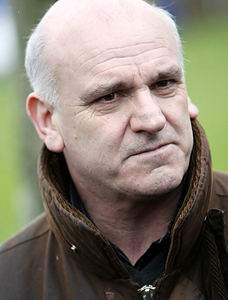|
voiceforchildren said...
As mentioned in the main posting.
Some documented evidence.
JAR/30: 3-4; 1940s to 1980s. Two fragments of burnt bone one is
fragment of longbone? Tibia. Submitted to University of Sheffield with
KSH/158. Origin confirmed as human. Submitted for dating awaiting
results.
JAR/33: 3-4; 1940s to 1980's.
Calcined fragment of bone. ?human.
JAR/53: 183. Cellar 3 Dark char rich deposit equivalent to 169.
4 / 5: 1960s to present date.
5 fragments of calcined long bone ?human.
JAR/54: 183. Cellar 3 Dark char rich deposit equivalent to 169.
4 / 5: 1960s to present date.
4 fragments of calcined bone ?human.
JAR/55: 183. Cellar 3 Dark char rich deposit equivalent to 169.
4 / 5: 1960s to present date.
1 fragment of calcined bone ?human.
JAR/57:183. Cellar 3 Dark char rich deposit equivalent to 169.
4 / 5: 1960s to present date.
2 fragments of bone of unknown origin.
JAR/56: 183. Cellar 3 Dark char rich deposit equivalent to 169.
4 / 5: 1960s to present date.
1 fragment of bone ?human.
JAR/67: 183. Zone 3 East Cellar 3.
4 / 5: 1960s to present date.
Human Tooth: deciduous left maxillary first molar, age 9 yrs + 3
yrs. Could have been shed naturally (Anthro exam).
Submitted to odontologist, see report.
JAR/69: 183. Zone 3 East Cellar 3.
4 / 5: 1960s to present date.
Fragments x 3 of possible human cortical bone.
JAR/61: 183 Zone 4 East Cellar 3.
4 / 5: 1960s to present date.
23 Fragments of bone:
1 Burnt fragment which closely resembles a human juvenile mastoid
process.
2. Burnt fragment of ?human mandible.
3. Fragments of burnt long bone x 3 measuring between 11.3 and 16.3
mm.
4. Fragments of unidentified burnt cortical and trabecular bone x
7.
5. Fragment of slightly burnt long bone measuring 33 mm. The cortex
of the
bone resembles human but it is quite thick and the trabeculae can
not be seen because it requires cleaning. It appears to have been cut at
one end.
6. Fragments of unburnt unidentified long bone. x 3 The appearance
and texture of the cortex of the fragments appears more animal than
human but it is advised that further examination should be undertaken in
order to confirm this.
7. Fragments of unidentified long bone x 7. 5 have been burnt and 2
haven't. Species
uncertain although two of the burnt fragments could possibly be
human
JAR/90: 183 Cellar 3 Zone 3 East.
4 / 5: 1960s to present date.
Fragments of unidentified bone of unknown species. One which is
calcined is possibly human bone.
Cellar 4 Context 169 (redeposited char material from fire
elsewhere. Unsealed)
JAR/36: 169. Cellar 4 E. Charred material at southern end of Zone
4. Equivalent to 127.
4 / 5: 1960s to present date.
Fragment of bone ?human.
JAR/37: 169. Cellar 4 E. Charred material at southern end of Zone
4. Equivalent to 127.
4 / 5: 1960s to present date.
Fragment of burnt bone. ?human mastoid process
JAR/39: 169. Cellar 4 E. Charred material at southern end of Zone
4. Equivalent to 127.
4 / 5: 1960s to present date.
Fragment of burnt bone ?human.
JAR/40: 169. Cellar 4 E. Charred material at southern end of Zone
4. Equivalent to 127.
4 / 5: 1960s to present date.
Fragment of bone ?human.
GMK/18: 169. Cellar 4 E. Charred material at southern end of Zone
4. Equivalent to 127.
4 / 5: 1960s to present date.
Human tooth. Anthro exam - deciduous left maxillary lateral
incisor. Age range
6 yrs + 2yrs
10 March 2012 17:22 |



